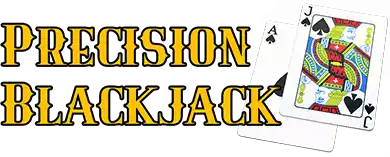The Truth About Blackjack Myths: What Really Works?
The Truth About Blackjack Myths: What Really Works?
Separating Fact from Fiction
Blackjack is one of the most popular and widely played casino games in the world. With its blend of strategy, skill, and a touch of luck, it has captivated players for generations. But with its popularity comes a wealth of myths and misconceptions that can lead players astray. From the belief that blackjack is purely a game of chance to the idea that certain strategies can guarantee a win, these myths can affect how you play and ultimately impact your success at the table.
In this article, we’re going to debunk some of the most common blackjack myths and replace them with facts. We’ll explore what really works in blackjack, providing you with the knowledge you need to make informed decisions and improve your game. Whether you’re a seasoned player or a beginner, understanding the truth behind these myths will help you play smarter and more confidently.

Myth 1: Blackjack is Purely a Game of Luck
One of the most pervasive myths about blackjack is that it’s purely a game of luck, like slots or roulette. While luck certainly plays a role in the short term, blackjack is fundamentally a game of skill and strategy.
The Truth: Skill and Strategy Matter
Unlike games of pure chance, such as slots, blackjack allows players to make decisions that influence the outcome. Every move you make—whether to hit, stand, double down, or split—can either increase or decrease your chances of winning. By learning and applying basic strategy, you can reduce the house edge and improve your odds of success. In the long run, skilled players who consistently use strategy will fare better than those who rely solely on luck.
Myth 2: The Dealer is Out to Get You
Some players believe that the dealer is actively working against them, using tricks or manipulation to ensure that the house wins. This myth can create a sense of mistrust and frustration, leading players to make poor decisions based on emotion rather than logic.
The Truth: The Dealer Follows Strict Rules
In reality, the dealer has no personal stake in the outcome of the game. They are simply following a set of strict rules that dictate when they must hit or stand. For example, dealers are required to hit until they reach a total of 17 or higher, regardless of the player’s hand. Understanding that the dealer is not making subjective decisions can help you focus on your own strategy rather than worrying about the dealer’s actions.
Myth 3: You’re Due for a Win After a Losing Streak
The idea that you’re “due” for a win after a series of losses is a classic example of the gambler’s fallacy. This myth suggests that if you’ve been losing, the odds of winning must increase to balance things out. It’s a tempting belief that can lead players to increase their bets in anticipation of an impending win.
The Truth: Each Hand is Independent
In blackjack, each hand is independent of the previous ones. The cards don’t have memory, and the outcome of one hand doesn’t influence the next. The odds of winning or losing remain the same regardless of previous results. Believing that you’re due for a win can lead to reckless betting and larger losses. Instead, it’s important to maintain consistent bet sizing and focus on making the best possible decisions for each individual hand.
Myth 4: Card Counting is Illegal
Card counting is often portrayed as a nefarious tactic used by professional gamblers to cheat the casino. This myth has been popularized by movies and TV shows, leading many to believe that card counting is illegal and could get you in serious trouble.
The Truth: Card Counting is Legal, But Not Welcome
Card counting is a legitimate strategy that involves keeping track of the high and low cards that have been dealt to gain an advantage over the house. While it’s not illegal, casinos don’t appreciate it and may take action if they suspect you’re counting cards. This could include asking you to leave, banning you from playing blackjack, or implementing countermeasures like frequent shuffling. If you choose to count cards, it’s important to be discreet and aware of the potential consequences.
Myth 5: Always Take Insurance When the Dealer Shows an Ace
When the dealer’s upcard is an Ace, players are often offered the chance to take insurance, a side bet that pays out if the dealer has blackjack. Some players believe that taking insurance is always a smart move, as it protects against a dealer blackjack.
The Truth: Insurance is a Losing Bet
In most cases, taking insurance is not a good idea. The odds of the dealer having blackjack are less than 1 in 3, which means that, over time, you’ll lose more money by taking insurance than you’ll save by winning the bet. The house edge on insurance is high, making it a losing proposition in the long run. Instead of taking insurance, it’s generally better to stick to your main bet and focus on playing your hand according to basic strategy.
Myth 6: You Should Mimic the Dealer’s Strategy
Some players believe that they can improve their odds by mimicking the dealer’s strategy—hitting until they reach 17 or higher, then standing. This approach might seem logical, as the dealer follows a strict set of rules, but it’s not the best strategy for players.
The Truth: Players Have More Flexibility
As a player, you have more options and flexibility than the dealer, and you should use these to your advantage. For example, you can double down, split pairs, or surrender, while the dealer cannot. By mimicking the dealer’s strategy, you’re not taking full advantage of the opportunities available to you. Instead, focus on using basic strategy, which is designed to optimize your decisions based on the specific situation at hand.
Myth 7: You Can Predict the Outcome Based on Previous Hands
Another common myth is the belief that you can predict the outcome of future hands based on the results of previous ones. For example, if the table has seen several low cards in a row, some players might assume that high cards are more likely to appear in the next hand.
The Truth: Blackjack is Random
In blackjack, each hand is independent and random, especially when multiple decks are used and shuffled frequently. The distribution of cards in previous hands doesn’t influence the distribution in future hands. While it’s true that card counting can give you some insight into the remaining deck, this is different from predicting specific outcomes based on recent results. It’s important to approach each hand with a fresh perspective, using strategy rather than superstition to guide your decisions.

Practical Tips for Beating the Myths
Now that we’ve debunked some of the most common blackjack myths, here are a few practical tips to help you play smarter and avoid falling into the trap of misinformation:
- Learn and Use Basic Strategy
Basic strategy is the foundation of successful blackjack play. By learning and consistently applying basic strategy, you can minimize the house edge and make the best possible decisions for each hand. This will help you avoid common mistakes and improve your overall performance.
- Stay Disciplined with Your Betting
One of the most dangerous myths is the belief that you’re due for a win or that you can chase losses. Stay disciplined with your betting by setting limits and sticking to them, regardless of winning or losing streaks. This will help you manage your bankroll effectively and avoid unnecessary risks.
- Focus on the Long Game
Blackjack is a game of ups and downs, and it’s important to focus on the long game rather than getting caught up in short-term results. By playing consistently and using strategy, you’ll improve your chances of success over time.
Conclusion: Play Smart, Not Superstitious
Blackjack is a game that rewards skill, strategy, and smart decision-making. By debunking these common myths and focusing on what really works, you can play with confidence and improve your chances of winning. Remember, success in blackjack isn’t about luck or superstition—it’s about making informed decisions based on knowledge and strategy.
So the next time you sit down at the blackjack table, leave the myths behind and play with a clear mind and a solid strategy. Good luck, and may the cards be in your favor!

